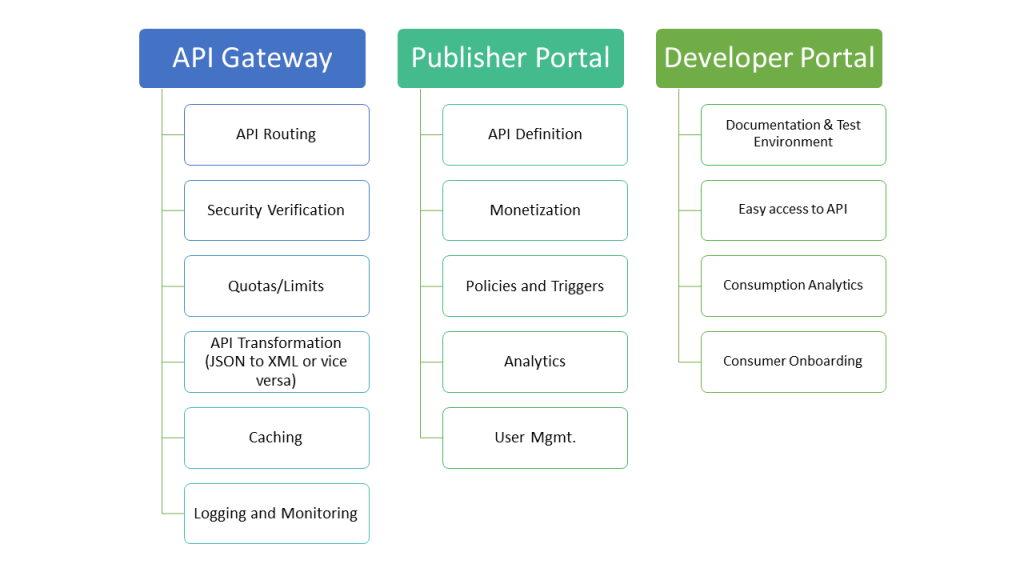This blog gives an introduction of Azure API Management (APIM) and its features along with the advantages.
So basically, what are APIs?
Application Programming Interfaces (APIs) are the most efficient way of sharing data and can also be used to implement functionality or interact with data from the third-party sources. It means one can use a Java API for fetching data in .Net applications. Many businesses rely heavily on APIs for essential software. But the major drawback of APIs is that one cannot analyse the performance or track the utilisation.
To overcome this problem, Microsoft provided a solution in the form of Azure API management (APIM). Azure API management gives us a framework for publishing our APIs from on-premises, cloud or any external server, and it will be available to customers, developers and partners. APIM comes up with built-in benefits like business insights, analytics, developer engagement, security and protection.
APIs in Azure are protected by using API keys. The distribution of these keys can be controlled by granting them to a selective few.

One of the biggest advantages of APIM is that it allows customization of the behaviour of API. It can be a short program that gets executed just before or after an API is invoked. This short program is a collection of statements technically called as Policies in APIM. Examples are format conversion from XML to JSON, applying rate and quota limits and enforcing IP filtering. It also supports caching for improving performance. Furthermore, you can also use C# (6.0) expressions, .Net framework types, if-else-then statements, switch construct and so on. In a nutshell, APIM policies offer constructs almost equivalent to a programming language.
Another important feature of APIM is its rich analytics. Excellent visualization of analytics is presented consisting of the health and usage details of APIs. Custom alerts can be set for any conditions related to APIs. Administrators, authors and other specific people will be notified via email if any wrongdoing takes place as per the conditions set in the alerts.











